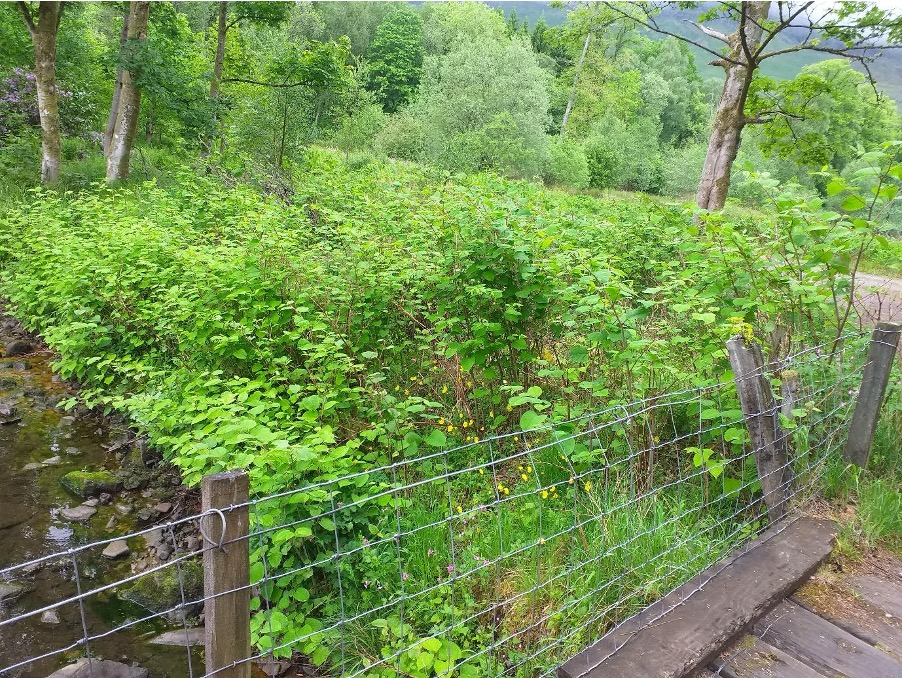

The Loch Lomond Fisheries Trust has been actively combating the threats posed by Invasive Non-Native Species (INNS) across the Loch Lomond catchment region. This has been through the use of herbicides, mechanical removal and by organising large volunteering events with local communities. Invasive species of particular concern are the giant hogweed, Japanese knotweed, and Himalayan balsam.
Additionally, within the Lomond catchment area there have also been confirmed examples of giant knotweed, which is a hybrid form of Japanese knotweed that can grow up to 4 meters in height. To identify target sites for INNS, last week the Trust split into two teams, with one team searching for and identifying new sites of Japanese knotweed on the river Endrick, and a second team using GIS mapping software on the Blane Water, in order to identify INNS as well as record other important data such as river blockages and pollution events.

Japanese knotweed observed by Team 2 on the Blane Water, Wednesday the 9th of June
Additionally, all six of the Trust’s interns recently attended a safe use of pesticides course, and subsequently passed an in depth exam on safe pesticide usage last week. This has meant that the Trust can now utilise interns in applying herbicides in a safe and targeted manner to INNS within the catchment region.
Last week, this herbicide application took place by the Blane Water, a small but important river that flows into the Endrick, which in turn flows into Loch Lomond. Herbicide was applied to giant hogweed plants in a section of the river above Quinloch, with staff working together to cover the riverbank and accurately apply herbicide only to the target plants, ensuring the rest of the riverbank was left undisturbed.